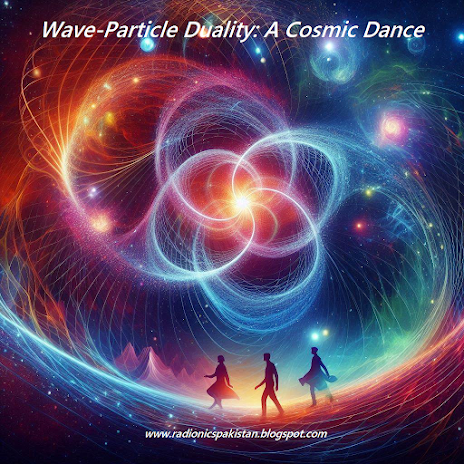سر درد
کے لیے مساج پوائنٹس: تفصیلی رہنمائی
سر درد
ایک عام مسئلہ ہے جو مختلف وجوہات کی بنا پر ہو سکتا ہے، جیسے تناؤ، تھکاوٹ، یا
میگرین۔ مساج تھراپی ایک قدرتی اور مؤثر طریقہ ہے جو سر درد کو کم کرنے میں مدد کر
سکتا ہے۔ اس بلاگ پوسٹ میں، ہم سر درد کے لیے مختلف مساج پوائنٹس، ان پوائنٹس کو
کیسے مساج کرنا ہے، اور مساج کی تکنیکوں اور طریقہ کار کے بارے میں تفصیل سے بات
کریں گے۔
مساج
پوائنٹس
- یونیئن
ویلی (LI4)
- یہ
پوائنٹ آپ کے انگوٹھے اور شہادت کی انگلی کے درمیان واقع ہے۔
- اس
پوائنٹ کو مساج کرنے سے سر درد اور تناؤ میں کمی آ سکتی ہے۔
- ڈرلنگ
بامبو (UB2)
- یہ
پوائنٹ آپ کی بھنوؤں کے درمیان واقع ہے۔
- اس
پوائنٹ کو مساج کرنے سے آنکھوں کے ارد گرد کے درد اور سر درد میں کمی آ سکتی
ہے۔
- گیٹس آف
کانشسنیس (GB20)
- یہ
پوائنٹ آپ کی گردن کے پچھلے حصے میں، کھوپڑی کے نیچے واقع ہے۔
- اس
پوائنٹ کو مساج کرنے سے گردن کے درد اور سر درد میں کمی آ سکتی ہے۔
- تھرڈ آئی
(Yin Tang)
- یہ
پوائنٹ آپ کی بھنوؤں کے درمیان، ماتھے کے درمیان واقع ہے۔
- اس
پوائنٹ کو مساج کرنے سے تناؤ اور سر درد میں کمی آ سکتی ہے۔
- شولڈر ویل
(GB21)
- یہ
پوائنٹ آپ کے کندھوں کے درمیان واقع ہے۔
- اس
پوائنٹ کو مساج کرنے سے کندھوں کے درد اور سر درد میں کمی آ سکتی ہے۔
مساج
کرنے کی تکنیکیں
- پریشر
پوائنٹ مساج
- اپنے
انگوٹھے یا انگلیوں کا استعمال کرتے ہوئے، مساج پوائنٹ پر ہلکا دباؤ ڈالیں۔
- دباؤ کو
آہستہ آہستہ بڑھائیں اور 1-2 منٹ تک دباؤ برقرار رکھیں۔
- دباؤ کو
آہستہ آہستہ چھوڑیں اور ضرورت کے مطابق دہرائیں۔
- سرکلر
موشن مساج
- مساج
پوائنٹ پر اپنی انگلیوں کا استعمال کرتے ہوئے، ہلکے سرکلر موشن میں مساج
کریں۔
- 1-2 منٹ تک
مساج کریں اور ضرورت کے مطابق دہرائیں۔
- نکلنگ
مساج
- اپنی
انگلیوں کے جوڑوں کا استعمال کرتے ہوئے، مساج پوائنٹ پر ہلکا دباؤ ڈالیں۔
- دباؤ کو
آہستہ آہستہ بڑھائیں اور 1-2 منٹ تک دباؤ برقرار رکھیں۔
- دباؤ کو
آہستہ آہستہ چھوڑیں اور ضرورت کے مطابق دہرائیں۔
مثالیں
- یونیئن
ویلی (LI4)
- اپنے
انگوٹھے اور شہادت کی انگلی کے درمیان پوائنٹ پر دباؤ ڈالیں۔
- دباؤ کو
آہستہ آہستہ بڑھائیں اور 1-2 منٹ تک دباؤ برقرار رکھیں۔
- دباؤ کو
آہستہ آہستہ چھوڑیں اور ضرورت کے مطابق دہرائیں۔
- ڈرلنگ
بامبو (UB2)
- اپنی
بھنوؤں کے درمیان پوائنٹ پر ہلکے سرکلر موشن میں مساج کریں۔
- 1-2 منٹ تک
مساج کریں اور ضرورت کے مطابق دہرائیں۔
- گیٹس آف
کانشسنیس (GB20)
- اپنی
گردن کے پچھلے حصے میں، کھوپڑی کے نیچے پوائنٹ پر دباؤ ڈالیں۔
- دباؤ کو
آہستہ آہستہ بڑھائیں اور 1-2 منٹ تک دباؤ برقرار رکھیں۔
- دباؤ کو
آہستہ آہستہ چھوڑیں اور ضرورت کے مطابق دہرائیں۔
مساج
تھراپی ایک قدرتی اور مؤثر طریقہ ہے جو سر درد کو کم کرنے میں مدد کر سکتا ہے۔ ان
مساج پوائنٹس اور تکنیکوں کو استعمال کرتے ہوئے، آپ اپنے سر درد کو کم کر سکتے ہیں
اور اپنی زندگی کو بہتر بنا سکتے ہیں۔

.jfif)




.png)
.png)
.png)